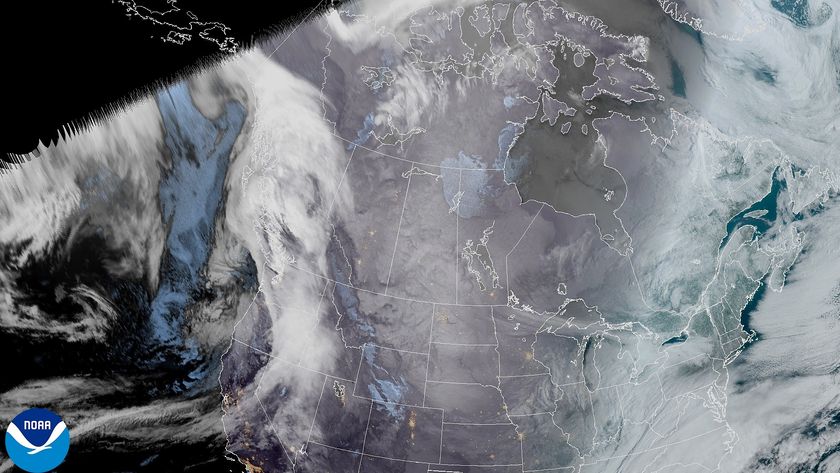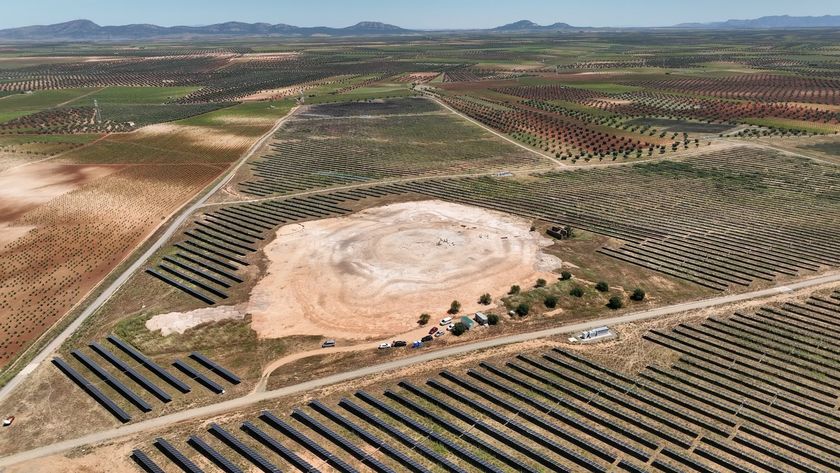
Shorelines Could Help Forecast Tsunami Floods

The 8.9-magnitude (which may have been upgraded to a 9.0) earthquake that struck Japan triggered tsunamis across the region. Here, results from a computer model run by the Center for Tsunami Research at the NOAA Pacific Marine Environmental Laboratory show the expected wave heights of the tsunami as it travels across the Pacific basin.
The largest wave heights are expected near the earthquake epicenter, off the coast of Sendai, Honshu, Japan. The wave will decrease in height as it travels across the deep Pacific but grow taller as it nears coastal areas. In general, as the energy of the wave decreases with distance, the near-shore heights will also decrease. For example, coastal Hawaii will not expect heights of that encountered in coastal Japan, according to NOAA.
(Image credit: National Oceanic and Atmospheric Administration (NOAA))Predicting flooding from tsunamis saves lives. After the Tohoku earthquake two years ago, alerts issued in advance of the monster waves saved thousands of people in Japan and other countries circling the Pacific Ocean.
But for many in Japan, the forecasts failed. Models could not predict how far inland the tsunami would rush, leading to thousands of deaths.
A new study suggests the devastating effects were heavily dependent on more than just the enormous size of the magnitude-9.0 earthquake that triggered the tsunami. The distance of the coast from the point where the earthquake ruptured also played a role. At just the right spacing from a coastline, a tsunami wave can focus its energy at the coast, sweeping farther inland than current models predict, researchers found.
"The effect of focusing that we have described can happen at a coastline directly in front of the [earthquake] source, where historically [the] most fatalities occur during tsunamis," said Vasily Titov, director of the National Oceanic and Atmospheric Administration's Center for Tsunami Research in Seattle and a study co-author. [Waves of Destruction: History's Biggest Tsunamis]
The results could improve computer models that predict tsunami flooding, the researchers said. The findings appear in the Feb. 27 issue of the journal Proceedings of the Royal Society A.
"We are still trying to understand the implications," said Costas Synolakis, a tsunami expert at the University of Southern California in Los Angeles and another co-author of the study. "But it is clear that our findings will make it easier to identify locales that are tsunami magnets, and thus help save lives in future events," he said in a statement.
Subduction zones and tsunamis
Sign up for the Live Science daily newsletter now
Get the world’s most fascinating discoveries delivered straight to your inbox.
The Tohoku earthquake struck on a subduction zone, an area at which two of Earth's tectonic plates crash together and one slides beneath the other. Notorious tsunami generators, earthquakes in these areas lift the seafloor on one side of the subduction zone and drop it down on the other side. Such elevation changes give the water above a giant push, creating a tsunami.
Each subduction zone quake generates multiple waves: a crest wave, above the uplifted seafloor, and a trough wave, from the dropped seafloor. The trough side starts with a big dip, or trough, while the crest side leads with a swell, or crest.
So a tsunami is actually a series of waves. Both the crest and trough wave sides propagate in both directions; the crest side sends waves both out into the open ocean and towards the shore, as does the trough side.
Subduction zones are always oriented so the trough side of the tsunami is closer to, and thus the first to advance towards, the nearest shoreline, Costas noted. The international research team created a computer model simulating a subduction zone tsunami. The model showed that waves from the crest side decrease in height continuously as they travel through the ocean, then grow in height near the shore, an effect called shoaling.
But trough-side waves vary in height as they travel through the ocean, the study found. At a certain distance from the earthquake source, called the focusing point, one wave from the crest side overtakes two waves from the trough side. The combined wave energy makes the tsunami even taller, though it quickly dissipates.
"The trough-wave side first decreases, then increases in height, then decreases again," Costas told OurAmazingPlanet.
The Goldilocks effect
"This means the distance between the earthquake zone and the shoreline is extremely important," Costas said. Sometimes, a trough-wave tsunami will come onshore right at its highest peak, driving water farther inland than expected.
But if the distance between a tsunami-generating earthquake and a shoreline is very short, focusing does not have time to occur. If the distance is long, focusing takes place far from the shore. If the distance between the subduction zone and the nearby land is just right, then focusing amplifies the wave height, making it bigger.
The team observed this effect in their model of the 2011 Tohoku earthquake. The same effect occurred in Central Java, which was struck by a tsunami in 2006, and in Papua New Guinea, where 2,200 people died in a 1998 tsunami.
Email Becky Oskin or follow her @beckyoskin. Follow us @OAPlanet, Facebook or Google+. Original article on LiveScience's OurAmazingPlanet.



